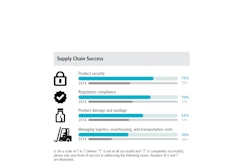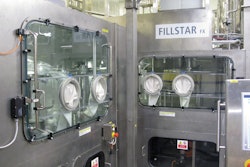
Whether it’s gluten content, natural ingredients, the absence of fat, or the presence of whole grain, it seems the food label reflects consumers’ most timely concerns. The same is generally true of other types of consumer products as well.
Importantly, when it comes to foods and beverages, the interests of consumers have in many ways outstripped the regulatory requirements. That is, while law and regulation dictate much of what appears on a food label, they do not prohibit further, voluntary statements or types of information, and in recent years it seems consumers’ lists of topics of interest above and beyond the required information is longer and longer.
The announcement of the SmartLabel™ program is an attempt to create packaging beyond packaging, or more accurately, labeling beyond packaging. The program is an initiative of the Grocery Manufacturers Association together with manufacturers and retailers. Although it’s been announced to the public and some companies have started using it, more widespread use will emerge over the next two years.
It applies to foods and beverages but also to pet care, personal care and household products, and represents a dramatic new blend of old and new technology, a way to extend the content of a product’s label using an electronic link.
The idea of SmartLabel™ is to provide a method for consumers to access much more detailed information than is already available on a product label. Consumers would scan a bar code on the label to be directed to a “landing page” containing the additional information. Alternatively, they can access it via an online search, or, coming soon, apps. Those without smart phones or computers will be able to get the same information from retailers’ customer service desks.
This is not the first time packagers have amplified the information they provide about their products with additional information available online, or even the first time a scannable symbol has been placed on the immediate container. But this is almost certainly the biggest use of such ideas, and it already enjoys the participation of dozens of major companies making thousands of products.
A typical retail food label, says the law, needs to contain a statement of identity, a statement of its net weight of contents, identification of the manufacturer, packer or distributor, a list of ingredients, and Nutrition Facts. Other requirements apply if flavors are used or if voluntary claims are made about nutrient content, health, or effects on the structure or function of the body.
A recent press release explains, “SmartLabel™ will be available on an array of food, beverage, personal care, household and pet care products with information on hundreds of attributes covering thousands of products, including nutritional information, ingredients, allergens, third-party certifications, social compliance programs, usage instructions, advisories and safe handling instructions and company/brand information, along with other pertinent information about the product.” The information in the landing pages will be organized in a consistent manner regardless of the product type, to enhance the predictability and familiarity of the types of information provided.
Companies who participate in this program will need to be as careful in the preparation of the extra information provided as they are in preparation of labeling content. From a legal perspective, it is important to note that, for FDA-regulated products such as foods and beverages, FDA has taken the position that information provided on web sites is considered “labeling” of a given product if the product’s label contains a link to or direction of consumers to the site. That means the packager is responsible for the information on the site on the same basis as if it were on the package label, so that all statements need to be truthful and not misleading and any claims need to comply with FDA’s legal and regulatory requirements for, for example, health claims or nutrient content claims. The US Department of Agriculture takes a similar approach regarding meat and poultry labeling.
The effort is already stirring some controversy. The SmartLabel™ information can include whether a food was made with genetically modified organisms. Because the SmartLabel™ program is voluntary on the part of the participating food companies, advocates who would rather see the law require mandatory GMO labeling are not happy.
In fact, right now, food companies who would rather GMO labeling remain voluntary are asking the US Congress to change the law to make that so. If they succeed, that new federal restriction would override the effectiveness of a Vermont law that has already been passed and would begin to require GMO-containing foods to be labeled next year.
It’s not clear right now who will succeed. What does seem clear is that a program this big and revolutionary will create more news and discussion in years to come.
Hey foreign food contact suppliers: FSMA regs cover you, too, in a way
Food packaging makers and converters have long understood that the 2011 Food Safety Modernization Act’s extensive new “preventive controls” requirements did not apply to them as such. It is registered food facilities that bear the new law’s primary burdens, not makers of food contact materials such as packaging.
There was great interest, therefore, in the FDA’s recently finalized regulations that implemented the law’s Foreign Supplier Verification Program, which requires those food makers to verify that the foreign suppliers they get “food” from are also in compliance with FDA requirements. Packaging industry voices loudly urged FDA to make clear that foreign suppliers of food contact materials were exempt from having to provide the same kinds of verifications as suppliers of food as such, that is, that FDA should declare that for purposes of this rule, “food” doesn’t include food contact materials. Alas, FDA issued its final regulations in November 2015 and specifically declined to make that exemption. This was a surprise to many observers because FDA had in the past given informal indications that it would decide the issue differently. Stay tuned, there may be further developments as industry representatives may press the point further to try to get this result changed. PW
Eric Greenberg can be reached at [email protected], or visit his firm's website at www.ericfgreenbergpc.com.

























